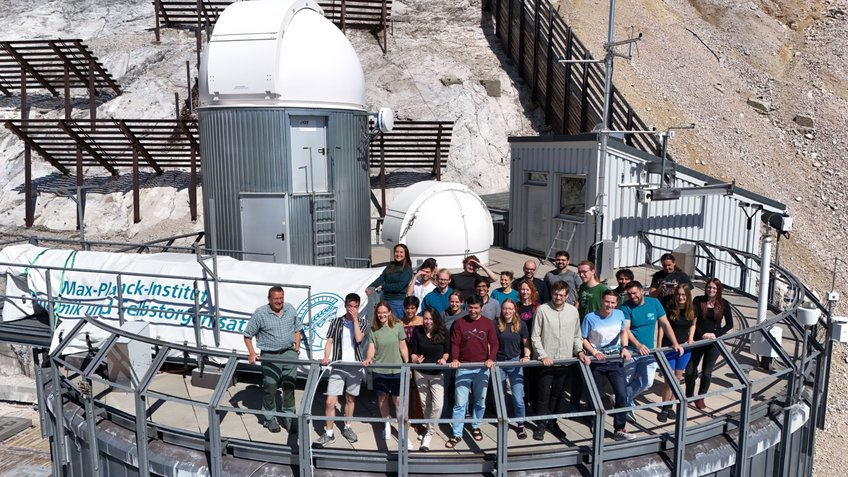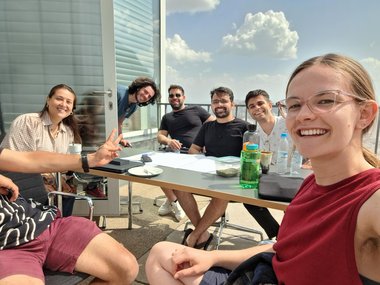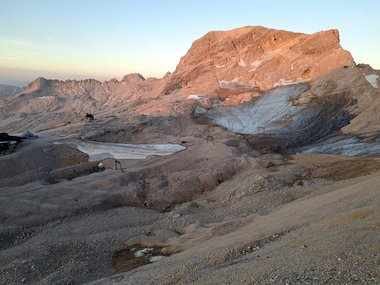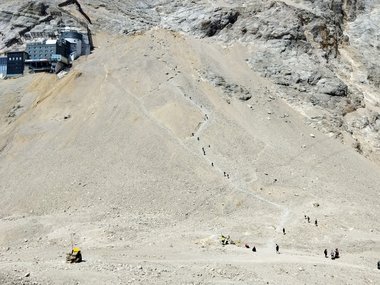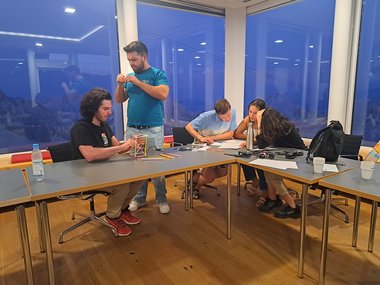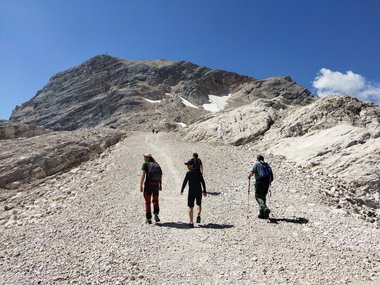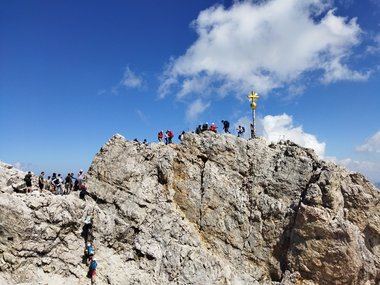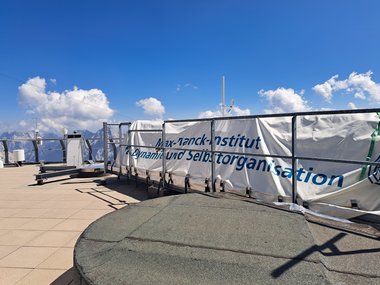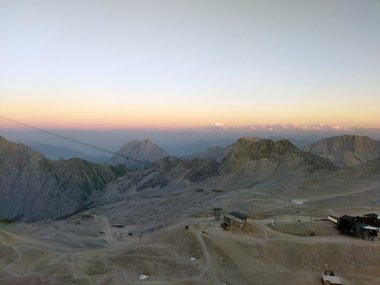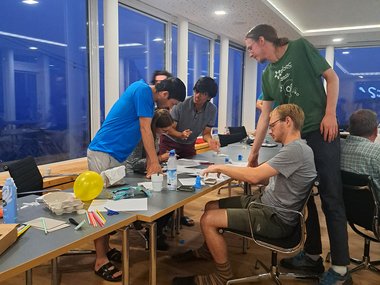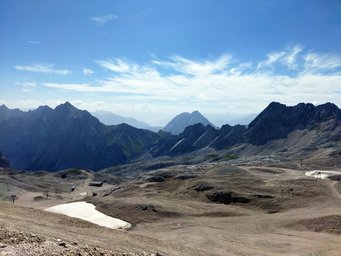
Science at New Heights: A Symposium at Germany’s Highest Peak
In August, a group of MtL PhD candidates, Fellows and invited speakers gathered at the Umweltforschungsstation Schneefernerhaus on the Zugspitze for four days of talks, workshops, and stargazing. Between inspiring lectures, science communication training, and moments of awe on the mountain, participants gained fresh perspectives on research, collaboration, and the world around them—literally from 2,962 meters above sea level. Read the recap by our PhD candidate Sophia Hampe, who was the main organizer of the symposium together with her peer Irene Pellini.
Have you ever had those conversations where people say it’s important to change perspectives and look at things from another angle? We took that advice quite literally and held a four-day symposium in August on top of Germany’s highest mountain. The journey itself was adventurous: starting in Garmisch-Partenkirchen, you can choose between a cogwheel train, a cable car, or your own feet to get up to the 2,962-meter-high Zugspitze. Situated between the “Gipfel” and the “Platt” is the renowned Umweltforschungsstation Schneefernerhaus (UFS). Built in the 1930s as a hotel for the rich and famous, it is now Germany’s highest research station. Multiple institutions from across the country have installed instruments and collect data to study clouds, weather, air pollution, pollen, and much more. The only way to reach the station is a self-operated six-person gondola that runs between the Platt and UFS. Friendly disputes over who gets to press the button that operates the gondola (a very special feeling indeed) were amicably resolved.
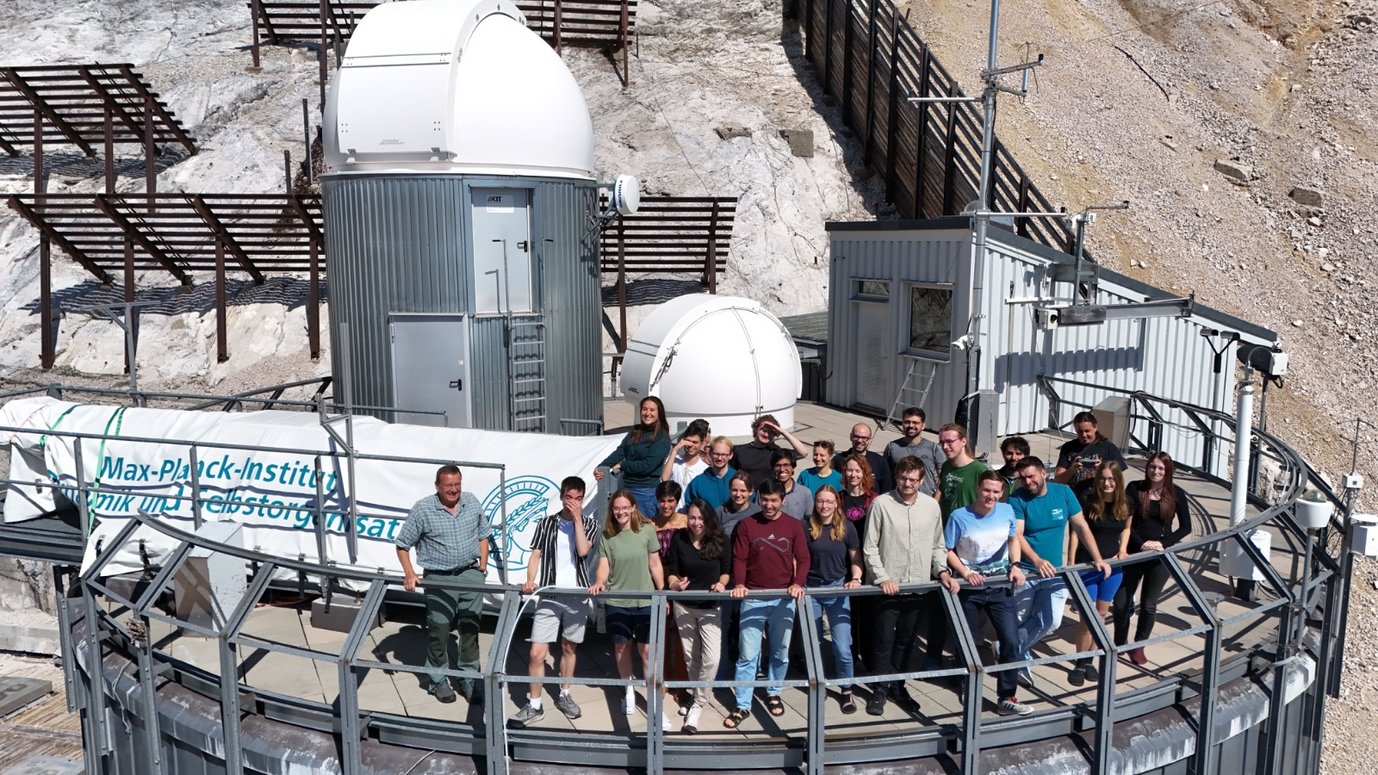
Our days at UFS were filled with talks from inspiring speakers. From our MtL Fellow Eberhard Bodenschatz, we learned about his path to becoming the director at MPI DS, along with useful do’s and don’ts he picked up along the way. Our Fellow Kerstin Göpfrich gave great insight into RNA design strategies in the context of synthetic immune cells.
Viola Priesemann, who leads the Research Group Neural System’s Theory at MPI for Dynamics and Self-Organization in Göttingen, shared her latest research on self-organized criticality in neurons. Stefano Villa, who is also Research group leader at MPI for Dynamics and Self-Organization, engaged us with his work on tissue dynamics. He also highlighted how, in research, it is always worth paying attention to unexpected details/ outcomes in your experiments. And finally, Karl Gödel Project Manager at Bosch Quantum Sensing, offered a perspective on what it is like to work on quantum sensing for the major industry player Bosch.
Alongside the scientific program, Manuel Maidorn, the public communication officer of MPI DS, led a multifaceted workshop on science communication. Starting with techniques to tailor a talk to different audiences, moving through practical exercises and group work, and ending with fruitful discussions about how PhD students can start public outreach here and now, we learned a lot about the importance and challenges of communicating science to our peers and the public.
To put our new skills into immediate practice, each student had the opportunity to share their latest work in small groups—a great way to learn about the exciting research being done and to benefit from each other’s expertise.
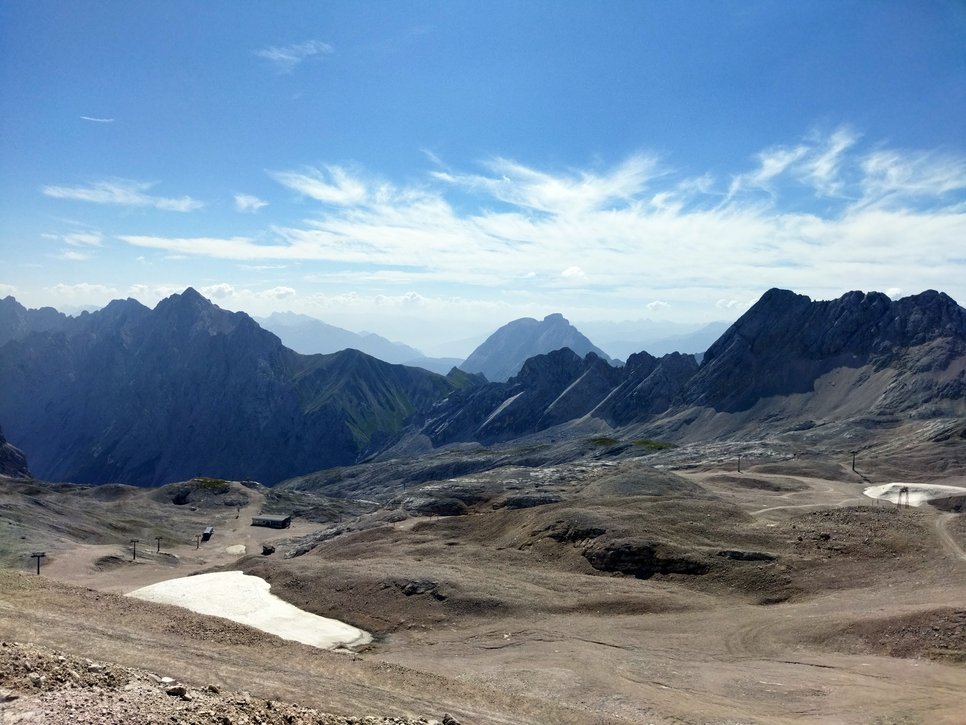
Throughout our stay, luck was on our side: we were able to spend all our lunches enjoying the sun and the panoramic views from the top, and to embark on small exploratory hikes toward the sadly dwindling remains of the glacier (climate change rears its ugly head). At night, the UFS rooftop terrace offered the perfect vantage point: as though pre-ordained, our visit coincided with the annual Perseid meteor shower which peaked exactly during our stay, allowing us to enjoy it under nearly ideal light-pollution free conditions.
We returned home with many new perspectives and many firsts: first time in the mountains at such high altitude, first cable car ride, first shooting stars, first time operating our own gondola, all augmenting the science and discussion at the heart of the symposium. Thanks to all our guests and the team at Schneefernerhaus for this amazing and memorable experience.
